Double-peaked, long-duration M5.7 solar flare from AR 3363 produced asymmetric halo CME, S2 – Moderate solar radiation storm
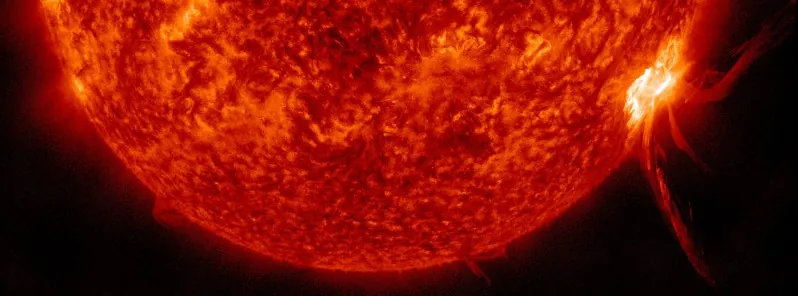
A double-peaked, long-duration solar flare measuring M5.7 erupted from Active Region 3363 (beta-delta) at 00:06 UTC on July 18, 2023, producing an asymmetric halo CME and S2 – Moderate solar radiation storm.
An associated asymmetric halo coronal mass ejection (CME) was observed in SOHO LASCO C2 imagery beginning near 23:43 UTC on July 17. Analysis and modeling of this event is still ongoing.1
This region also produced an M2.7 flare at 22:54 UTC on July 17.
A 10cm Radio Burst (Tenflare) with a peak flux of 1 500 sfu was detected from 23:27 UTC on July 17 to 00:03 UTC on July 18. A 10cm radio burst indicates that the electromagnetic burst associated with a solar flare at the 10cm wavelength was double or greater than the initial 10cm radio background. This can be indicative of significant radio noise in association with a solar flare. This noise is generally short-lived but can cause interference for sensitive receivers including radar, GPS, and satellite communications.
With the flares (M5.7 and M2.7) being back to back, the source of the tenflare that was associated with these events, could not be easily attributed to one or the other flare.
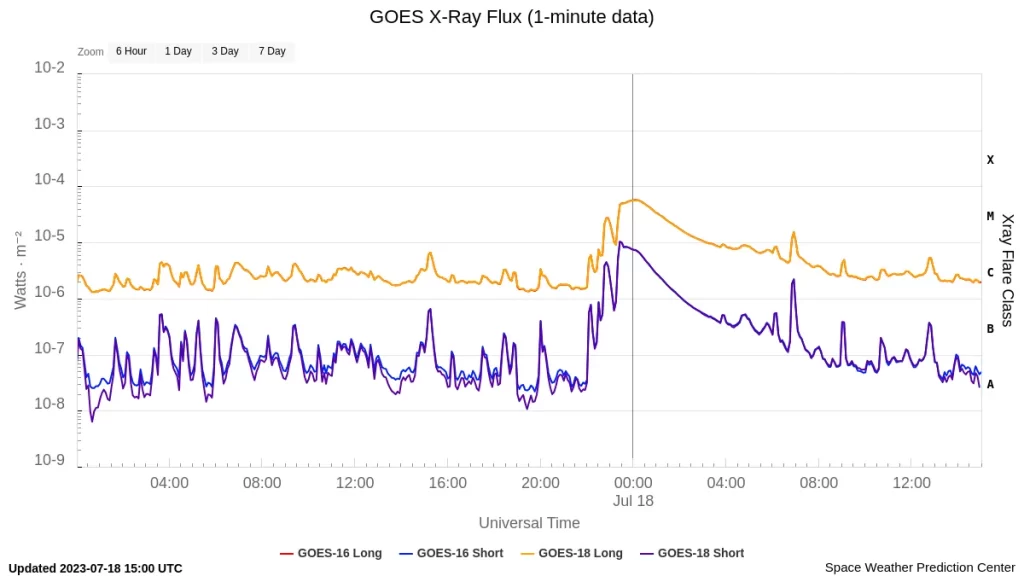
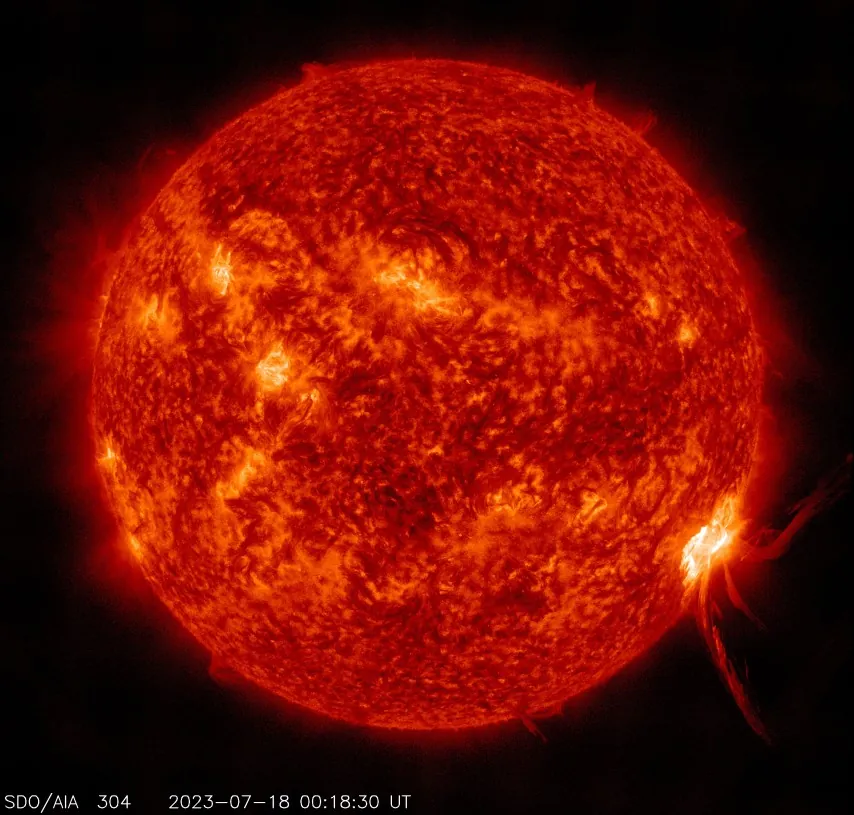
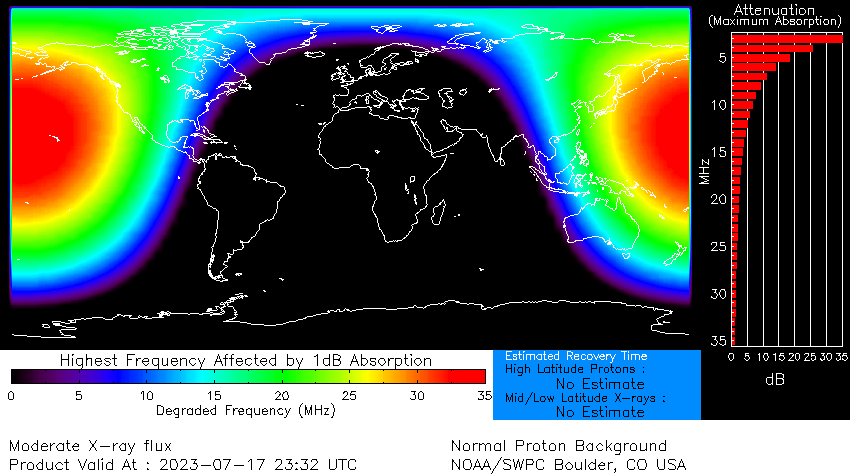
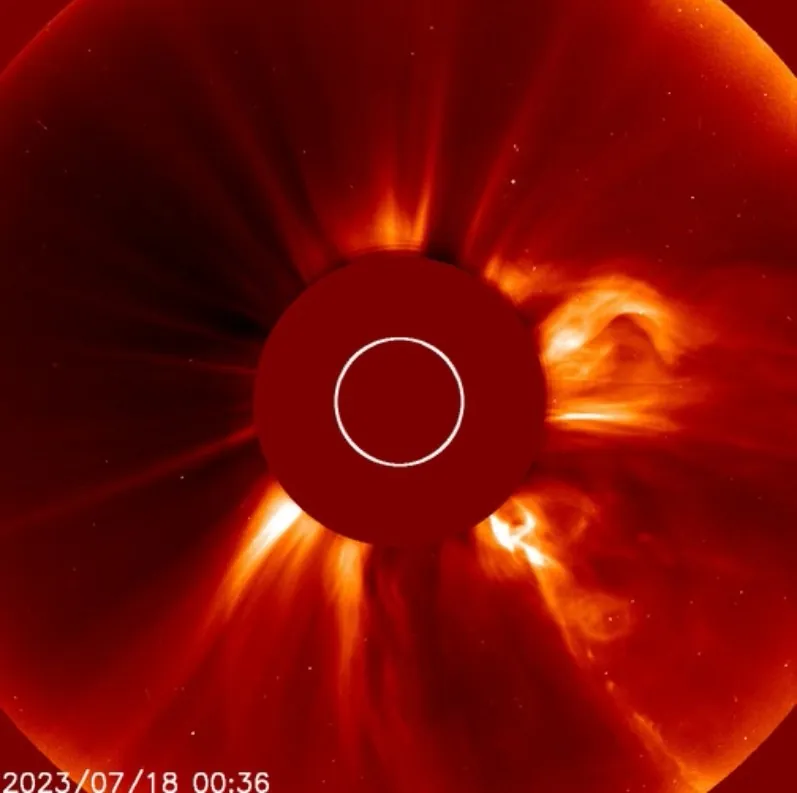
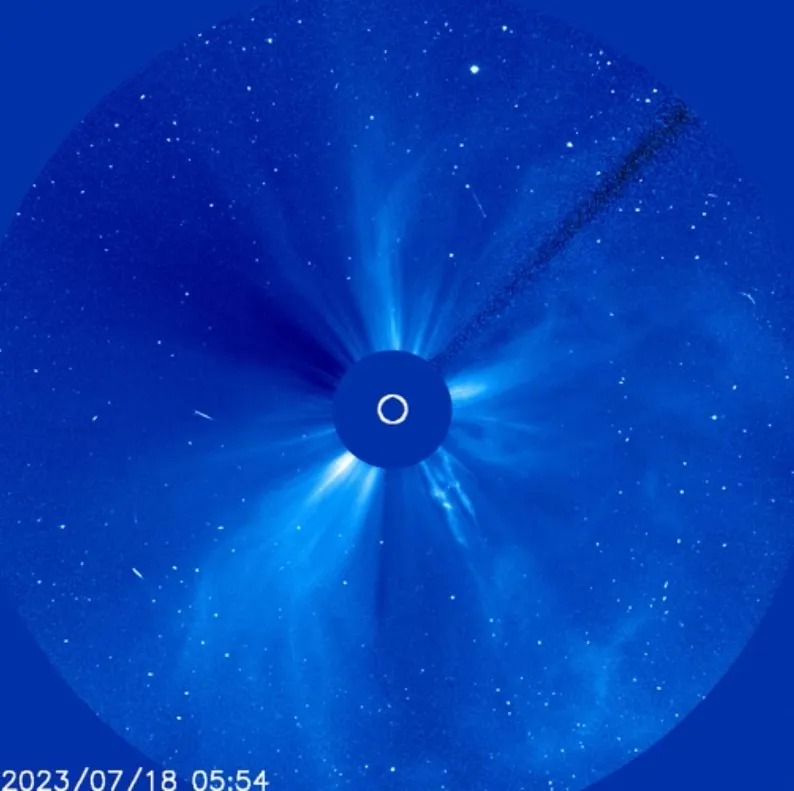
Region 3363 rotated closer to the southwest limb and was quite foreshortened, making classification even more difficult.
An additional M1.5 flare occurred at 06:56 UTC on July 18 from a region yet to rotate onto the East Limb.
Region 3372 (beta-delta) underwent fairly neutral changes and despite the delta magnetic configuration, magnetic shear was relatively weak. The region was the source of the largest flare since 00:30 UTC today, at 17/1516 UTC.
Region 3373 (beta-delta) experienced growth, in particular among the trailing and intermediate spots. The region also developed a minor delta configuration in the intermediate spot section.
New NOAA/SWPC Regions 3375 (beta), 3376 (beta), and 3377 (beta) were all assigned today – none of which were particularly active or noteworthy at present.
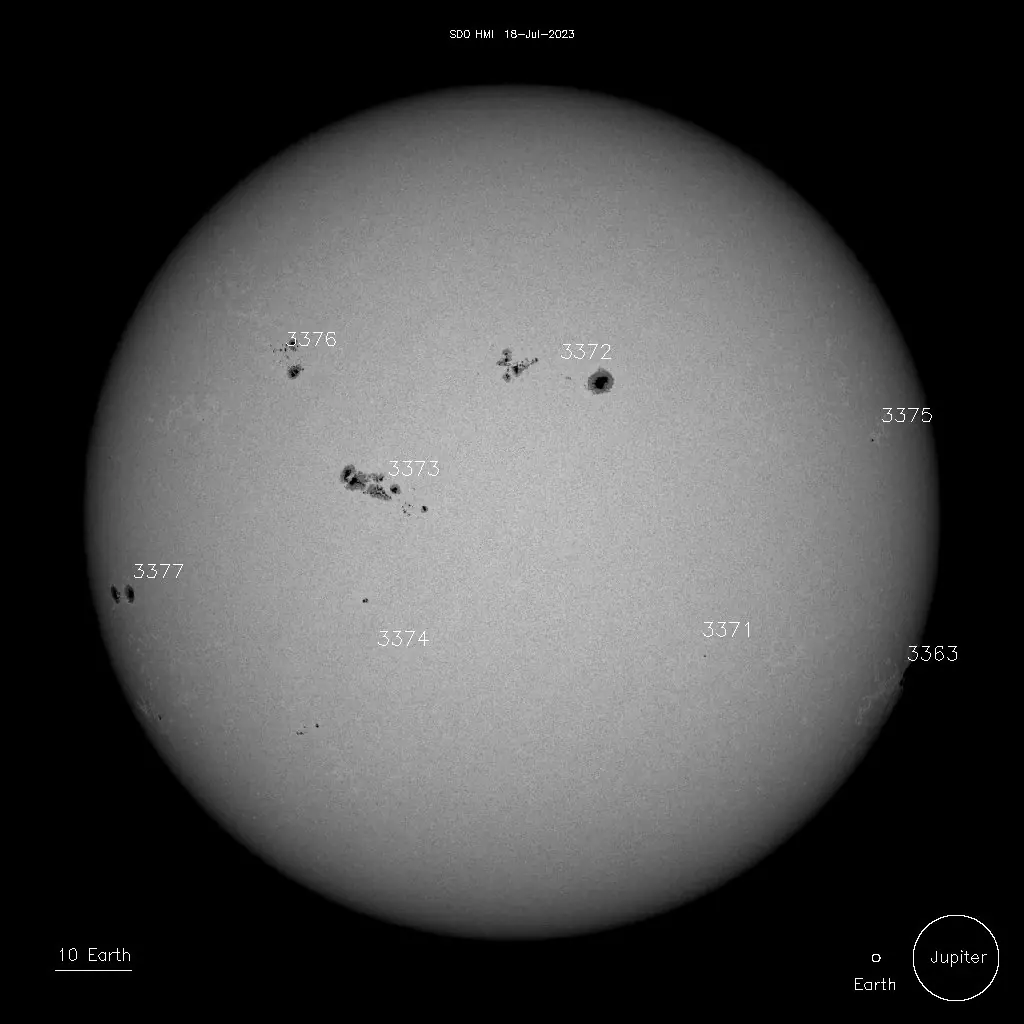
Solar activity is expected to be low, with a chance of M-class flares (R1 – Minor to R2 – Moderate) and a slight chance of X-class (R3 – Strong) events due to the latest decreased flare and activity trends, along with the departure of Region 3363 over the next 1 – 2 days.
The greater than 2 MeV electron flux was normal to moderate in 24 hours to 12:30 UTC today. However, the greater than 10 MeV proton flux reached well into the S2 – Moderate category, reaching a peak of 620 pfu at 06:15 UTC. This elevation was caused by the M5.7 CME event off the SW limb near 00:00 UTC.
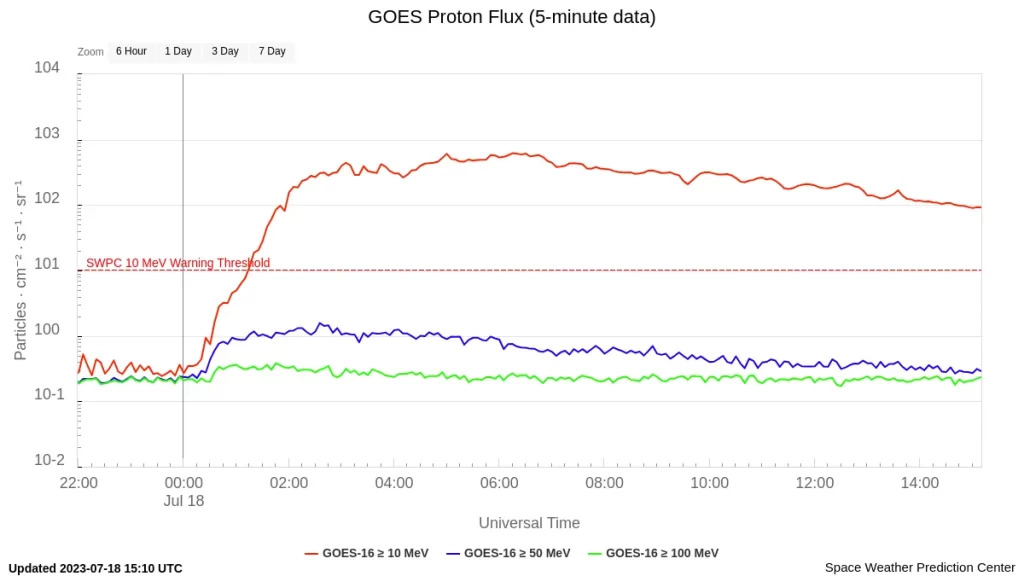
A polar cap absorption (PCA) event has been in progress since approximately 01:15 UTC today and was initiated by the arrival of energetic protons at the 10 MeV (megaelectron volts) level at Earth and the onset of a S1 – Minor Solar Radiation Storm event that began at 01:15 UTC. The S1 event was triggered by a coronal mass ejection (CME) associated with the aforementioned M5 flare that accelerated particles toward Earth. PCA events can prevent the ability to communicate via HF radio propagation around the polar regions and can last for hours to days. This event is likely to continue throughout July 18 and perhaps into July 19, SWPC forecasters said.
Solar radiation storms cause several impacts near Earth. When energetic protons collide with satellites or humans in space, they can penetrate deep into the object that they collide with and cause damage to electronic circuits or biological DNA. Also, when the energetic protons collide with the atmosphere, they ionize the atoms and molecules thus creating free electrons. These electrons create a layer near the bottom of the ionosphere that can absorb HF radio waves making radio communication difficult or impossible. Some impacts from solar radiation storms can impair the health and operation of satellites and International Space Station operations and crew, and impact HF communication in the polar regions, affecting transpolar commercial airline operations.2
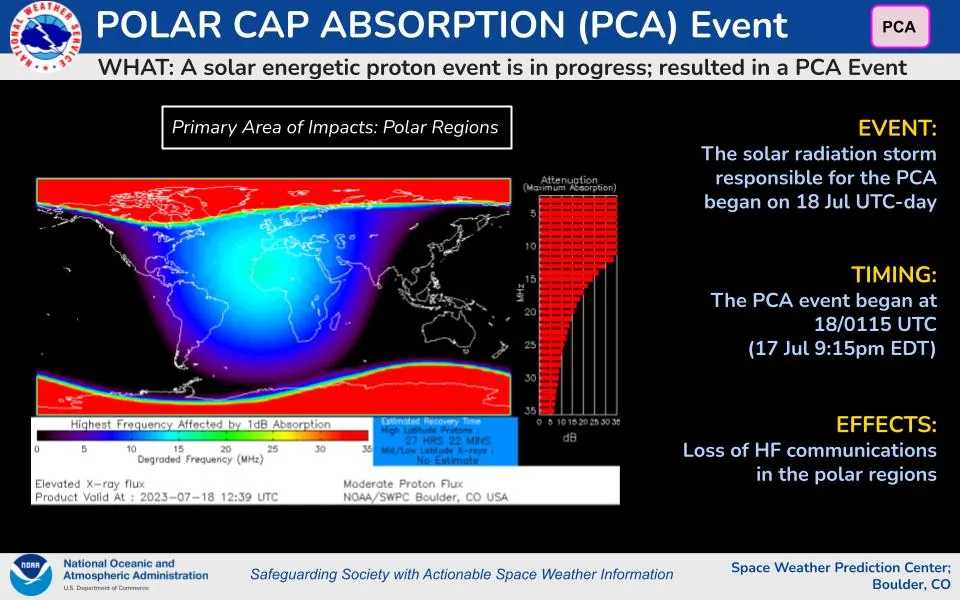
The greater than 2 MeV electron flux is expected to be normal to moderate, with a chance for high levels through July 20 in response to increased solar wind speeds. The greater than 10 MeV proton flux is expected to remain at S2 levels for the remainder of July 19, followed by S1 – Minor to S2 – Moderate levels are expected on July 19. Elevated levels are expected to continue on July 20.
Solar wind parameters over the past 24 hours were indicative of continued influences from the CME shock arrival on July 16, with a possible weak magnetic cloud arrival later in the period. Total IMF strength gradually weakened to about 5 – 7 nT from a peak of 14 nT. The Bz component rotated from mainly a northward deviation to a prolonged southward state near 05:00 UTC on July 17 and a max deviation of -10 nT. The Bz component continued some rotation afterwards, but in a weakened condition.
Solar wind speed gradually escalated from early speeds of mainly 425 – 500 km/s, before an unsteady, but gradual increase to ~600 km/s. The phi angle was in a predominant negative sector until about 06:30 UTC on July 17, when some rotation between sectors began.
The temperature dropped beginning about 18:00 UTC on July 17, while speed remained elevated – a hint that some magnetic cloud influences were underway.
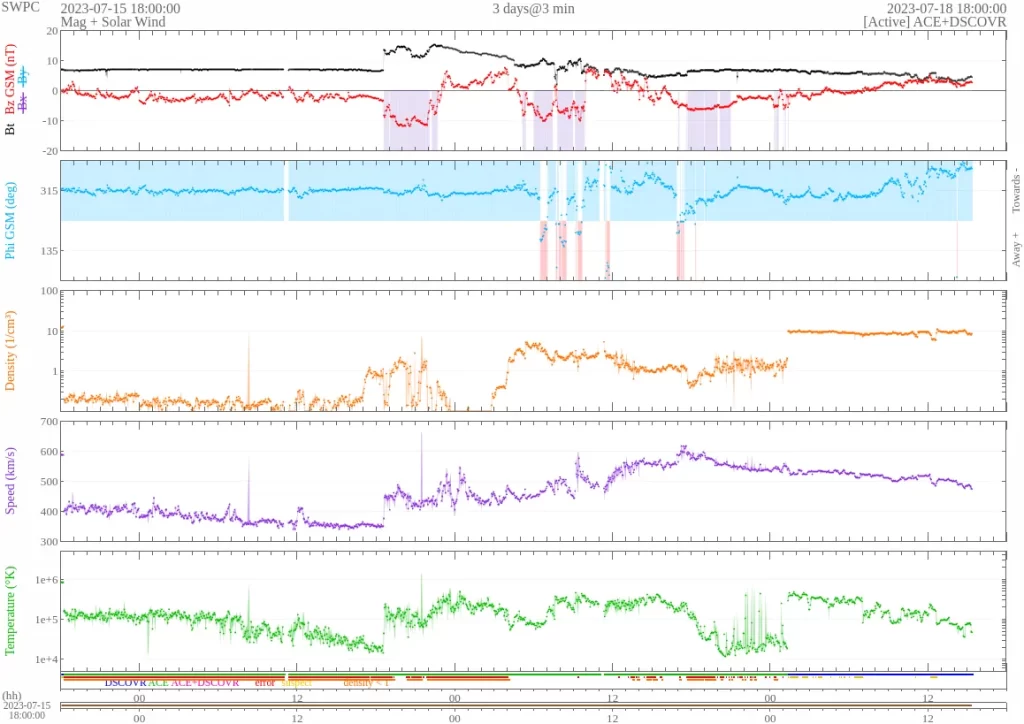
The solar wind field is anticipated to be in varying disturbed states due to continuing CME influences, and with the possible additional influence of another CME (from July 15) arriving as a glancing blow or near proximity passage on July 18. Enhanced and disturbed conditions are likely to carry over into July 19, before waning and giving way to mainly weak CH HSS influences on July 20.
The geomagnetic field reached G1 – Minor storm levels toward 12:30 UTC today and was otherwise quiet to active in varied response to the enhanced and disturbed solar wind environment.
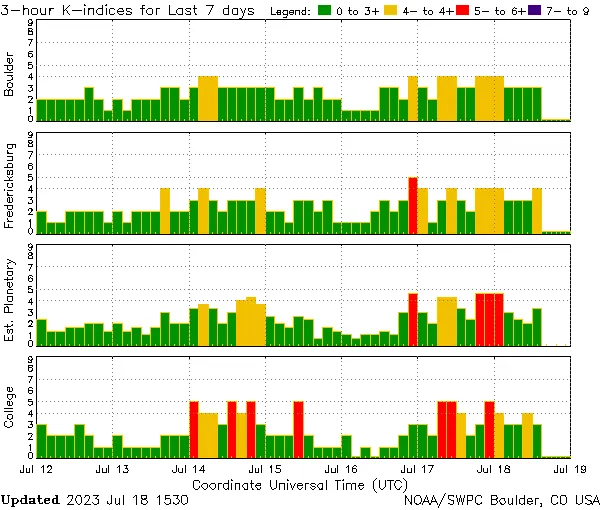
Primarily unsettled to active levels, with isolated periods of G1 – Minor storm levels are expected on July 18 due to continuing disturbances and possible arrival of a close proximity or glancing blow CME from July 15. Mainly quiet to active levels are expected on July 19 and 20 as CME influences wane and weak coronal hole high speed strean (CH HSS) effects remain.
References:
1 Forecast Discussion – Issued: 2023 Jul 18 1230 UTC – Prepared by the U.S. Dept. of Commerce, NOAA, Space Weather Prediction Center
2 Solar Storm (Solar Radiation Storm) (S Scale) – UNDDR
Featured image credit: NASA/SDI AIA 304, The Watchers

Commenting rules and guidelines
We value the thoughts and opinions of our readers and welcome healthy discussions on our website. In order to maintain a respectful and positive community, we ask that all commenters follow these rules.